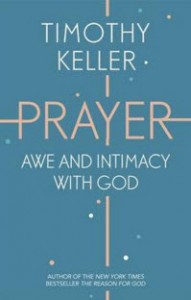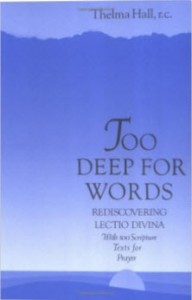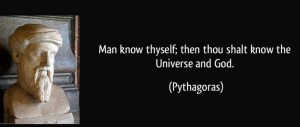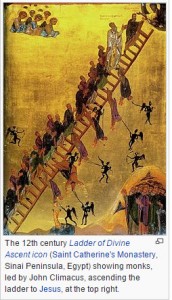A critique of
PRAYER: Experiencing Awe and Intimacy with God
By Timothy Keller
According to the book jacket of Prayer (November 2014), Timothy Keller has written this book to “give instruction and guidance in how to make prayer genuinely meaningful… more personal and powerful… [and to teach] how to establish a practice of prayer… and how to find a deeper connection with God.”
This purpose should raise questions. How could the prayer of a believer be other than genuine, meaningful, personal and powerful?  “The prayer of a righteous man is powerful and effective” (James 4:16). How can man deepen connection when God is the one making the connection? The reader is either connected to or separated from God. Any reader is either saved from God’s wrath or is continuing in the line of Adam to eternal destruction. “Since we have now been justified by His blood, how much more shall we be saved from God’s wrath through Him! (Romans 5:9) “…through one man [Adam], death came to all men, because all sinned” (Romans 5:12). By ignoring this distinction between believers and unbelievers, Prayer is typical of Keller’s books.
“The prayer of a righteous man is powerful and effective” (James 4:16). How can man deepen connection when God is the one making the connection? The reader is either connected to or separated from God. Any reader is either saved from God’s wrath or is continuing in the line of Adam to eternal destruction. “Since we have now been justified by His blood, how much more shall we be saved from God’s wrath through Him! (Romans 5:9) “…through one man [Adam], death came to all men, because all sinned” (Romans 5:12). By ignoring this distinction between believers and unbelievers, Prayer is typical of Keller’s books.
Some Historical Background
It helps us to correctly assess Prayer when we know that Keller’s public fascination with prayer dates back to the 1990’s. Between October 1998 and April 2002, he gave a series of sermons at Redeemer Presbyterian Church in New York City detailing his view on Christian meditation. He advocated its practice and reviewed what he sees as the spiritual, psychological, and material benefits to be obtained. In those sermons, he referenced the wide variety of sources (ancient, medieval, modern, Roman Catholic, Orthodox, Evangelical, and secular) which supposedly brought him to his understanding and advocacy of Christian meditation.
Catholic mystics
It is not surprising, therefore, that the Redeemer Presbyterian Church website features numerous resources pertaining to prayer. A significant portion of these resources extol not only meditation, but also mysticism, contemplative prayer, the lectio divina, spiritual disciplines, prayer walking and rope prayer. Favorable references to medieval Catholic mystics such as St. Ignatius of Loyola (who founded the militant Society of Jesus to oppose the Reformation), St. John of the Cross, and  St. Theresa of Avila (both of whom worked with the Jesuits and the Counter-Reformation movement) are also found. Of special interest is a favorable reference to a work by St. Theresa of Avila (1515-1582) entitled The Interior Castle, in which the Carmelite nun describes her mystical ecstatic prayer experiences and offers a seven-step method by which to ascend to divine union.
St. Theresa of Avila (both of whom worked with the Jesuits and the Counter-Reformation movement) are also found. Of special interest is a favorable reference to a work by St. Theresa of Avila (1515-1582) entitled The Interior Castle, in which the Carmelite nun describes her mystical ecstatic prayer experiences and offers a seven-step method by which to ascend to divine union.
In a sermon given January 11, 1999 on “Meditation, Affection, Contemplation, Kingdom”, Keller praises St. Theresa saying, “She was really something! She describes contemplation, and I’m going to follow her on this. She describes levels of contemplation… the ability to gaze rather than think… the ability to rest. It becomes satisfying! What more do I need? She talks about the prayer of conforming union and the prayer of transforming union… I want to confess to you that this rings true to me, but I don’t know anything about it.”
Throughout Prayer, Keller states that “a balance must be found.”[1] As would be expected with such an unbiblical goal, his ‘balance’ is posed as the following question: “If we accept all the warnings and cautions about mysticism, how are we to interpret the experience of the medieval Christian mystics? Many of the mystics seem to be praying to a very personal, triune God… other Christian mystical writers appear to have had the kinds of alterations in psychological consciousness that can be brought on by many forms of meditation. I can’t be as confident those experiences are the same as that described by the biblical writers. It is also possible that some mystical authors have had both kinds of experiences, and it is difficult, at least for me, to distinguish which were genuine encounters with God and which were not.”[2] Keller frequently feigns humility in the face of doctrinal error.
He speaks firmly and without ‘balance’ when he admires “the mystical tradition of The Cloud of Unknowing ”, an anonymous work of Christian mysticism written in the latter half of the 14th century. Here Keller says that he “stands with others” in seeing this older mystical tradition as “the bare bones of the teaching… an arduous trial… hard-eyed realism… especially the effort to suppress awareness of created things and the use of a single prayer word.”[3]
Keller’s fascination with mysticism
His ongoing fascination with mysticism is evident in Prayer. He admires “the experiences of deep love and delight in the accounts of the mystical writers” and tries to present their experiences as similar to being “full of Christ alone” as described by Jonathan Edwards.[4] As a pastor in the Presbyterian Church in America, he reaches far and wide trying to show that Reformed and Evangelical authors had views on prayer similar to those of the medieval mystics. He quotes (to mention only a few of his references) the Puritan Richard Sibbes, the Westminster professor Charles Hodge, George Mueller, Matthew Henry, C.S. Lewis, and Dwight Moody. His desire to quote Edwards, John Calvin, Martin Luther, John Owen, and other Reformed authors would appear to be an effort to convince the reader that he is a “convinced Protestant”, a “minister in the Reformed tradition.”[5]
Challenges to his ecumenism may explain the book’s confusion in placing scattered references to dangers in mystical prayer [such as his quotes from the German theologian Friedrich Heiler (1892-1967) on pages 38, 39] even as he argues for its desirability. He makes light of such dangers saying “there are things to learn here for those of us who stand outside of it” as he moves on to recommend Anthony Bloom, Thelma Hall, and Hans Urs Von Balthasar from Paulist and Ignatius presses.[6]
Anthony Bloom (1914-2003) was a bishop of the Russian Orthodox Church in Great Britain and Ireland. Bloom writes, “the repetition of the words, without any physical endeavor… not even movements of the tongue… can be used systematically to achieve an inner transformation… and brings us to stand in God’s presence.” A reviewer of his book notes, “I was fascinated to find points of resonance with the meditative practices of other religious traditions. I find myself eager to explore some of the methods he suggests.”
Thelma Hall is a New York nun whose book,  Too Deep for Words: Rediscovering Lectio Divina (1988) focuses on contemplative prayer as practiced for sixteen centuries in monastic tradition. The New York Times, May 6, 2001 reports that Thelma has “helped parents… to understand homosexual children.” She counsels “anyone of any religion” with “a unique combination of therapy and spiritual meditation… You can tell Thelma anything; she’s not going to judge you.”
Too Deep for Words: Rediscovering Lectio Divina (1988) focuses on contemplative prayer as practiced for sixteen centuries in monastic tradition. The New York Times, May 6, 2001 reports that Thelma has “helped parents… to understand homosexual children.” She counsels “anyone of any religion” with “a unique combination of therapy and spiritual meditation… You can tell Thelma anything; she’s not going to judge you.”
The following is a quote from Thelma Hall’s book which Keller recommends to his readers: “To see every woman and every man as sister and brother is to participate in the faith vision of the mystic, whose central intuition is a graced effect of contemplation which gradually transforms our way of seeing reality. This mystical vision is far from an esoteric dream, for surely the survival of our planet depends on a universal realization of this unity and the interconnectedness of all peoples and of all the cosmos, in the one Love which is God.”
Hans Urs Von Balthasar (1905-1988) was a Jesuit until Loyola’s Society of Jesus objected to his relationship with Adrienne Von Spehr (1902-1967), a physician from a Protestant home with whom he founded the Community of St. John. Balthasar said of Spehr that “after her conversion, a veritable cataract of mystical graces poured over her in a seemingly chaotic storm”. This included an open and intimate association with the Virgin Mary. While in a state of contemplative mystical prayer, she dictated over sixty books to Von Balthasar who said that “her spiritual productivity knew no limits.” He claimed that most of his own work was primarily inspired by her experimental theology. Balthasar’s three-volume Apocalypse of the German Soul was published during the Third Reich and is viewed by many as anti-Semitic.
Keller’s references reveal much about his method and intentions. His quotations from Reformed theologians are taken out of context thus altering their apparent force toward support of his position. Martin Luther would be the last to support a return to the futile prayer work of his monastic days. To imply that Jonathan Edwards would support mystical prayer and meditative techniques is frankly disingenuous. Keller’s seems determined to bring what he calls “the sincere ambition of the medieval Catholic mystics” into what remains of the Protestant Church five hundred years after Luther nailed his Ninety-five Theses to the Wittenburg door. He finds it interesting “to compare John Owen’s three steps of meditation to those of the traditional Catholic and Benedictine practice of lectio divina as described by Thelma Hall in Too Deep for Words.” Keller writes: “It is not recommended that you try to theologically analyze the text for doctrinal meanings. You are looking for something that seems very relevant for ‘me, now’ in my current situation. Hall suggests putting yourself into the biblical scene. Imagine Jesus looking into your eyes and saying the words to you. Hall says the goal of meditation is to start to feel God’s love. When meditation leads to a small fire of feeling and love, don’t keep meditating. Nurture the love-fire by longing for union with the one you love. This leads to what Hall defines as ‘interior silence’ experiencing direct wordless awareness of His presence.”[7]
Keller’s personal journey toward the prayer life
Keller begins this book with his own personal journey toward the prayer life he recommends. He wants no “either-or” between “assertive supplication” and “peaceful adoration” and believes that “prominent Catholic theologian Hans Urs von Balthasar has sought to bring balance” to the mystical, contemplative prayer tradition.[8] He can logically use John Piper’s Christian hedonism (276 n.7) as support for his conclusion that “if we don’t enjoy God supremely with all our being, we are not truly honoring him as Lord.”[9] He uses Question 1 of the Westminster Catechism to emphasize our duty to enjoy God (Question 1) while avoiding Question 2 which states that the Word of God is the only rule to direct us how to enjoy Him. He emphasizes the enjoyment of God in much the same way the Greek philosopher Epicurus (341-270 BC) emphasized happiness: “We must, therefore, pursue the things that make for happiness, seeing that when happiness is present, we have everything; but when it is absent, we do everything to possess it.”
Emphasis on Self
Keller is something of a post-modern Norman Vincent Peale and Robert Schuller in the continual emphasis on the ‘self’. “Being delighted in Him and delighting Him become inherently fulfilling and beautiful… Christians seek God for themselves… Christ will get you the love that you need to make up for your unhappy family history. God is what you need if you have a bad family background. This is what you need if you feel like a failure, if you feel lonely, or if you are sinking further into despair. Prayer turns theology into experience.”[10] “Prayer is the way to…access…love and to experience the calm.”[11] “Meditate on Jesus. Look at Him loving you, dying for you, rejoicing in you, singing over you. Look at all that, and He will be a delight to you.”[12]
Keller claims that he “just didn’t get prayer” (italics his). His answer was “to read widely and experiment in prayer.”[13] For Keller, prayer is hardly the spontaneous response of the believer washed in the Blood and covered by Christ’s Righteousness. He presents it as a laborious process of study and practice.  This is exemplified in forty-six full pages of foot-notes for this book of only 262 pages. In his wide reading and experimentation, he came upon the prayer journal of the popular Roman Catholic writer Flannery O’Connor, in which she asked, “Can’t anyone teach me to pray?… Oh God… help me get down under things and find where you are.”[14] Keller understands that O’Connor recognized “what Augustine saw clearly… that living well depended on the re-ordering of our loves… in the constant soul re-orientation of prayer.”[15]
This is exemplified in forty-six full pages of foot-notes for this book of only 262 pages. In his wide reading and experimentation, he came upon the prayer journal of the popular Roman Catholic writer Flannery O’Connor, in which she asked, “Can’t anyone teach me to pray?… Oh God… help me get down under things and find where you are.”[14] Keller understands that O’Connor recognized “what Augustine saw clearly… that living well depended on the re-ordering of our loves… in the constant soul re-orientation of prayer.”[15]
Eros and Agape
Augustine was steeped in pagan philosophy before he knew Scripture and from this, developed a concept of Christian love called Caritas. He attempted a synthesis of Eros and Agape, which the early church rightly saw as two different and utterly contradictory concepts of love. Eros is the love of whatever the individual sees as worthy of attachment. It is man-centered and seeks after what is the personal summum bonum (highest good) for the individual. Plato described it as “a longing after things and a violent attraction of the soul to them” (Cratylus 421a). Eros comes naturally to the heart of fallen man. In contrast, Scripture’s Agape is self-giving and God-centered always serving to glorify God rather than man. Agape love is a gift from God (1 John 4:7-11), a fruit of the Holy Spirit (Galatians 5:22). Agape seeks not its own (1 Corinthians 13:5).
Plato’s “violent attraction of the soul” is manifest in man’s constant attempt to ascend by his own effort to what he sees as his highest good, to attach himself to what he sees as being of greatest personal worth. “Come, let us build… a tower that reaches to the heavens, so that we may make a name for ourselves” (Genesis 11:4). The ladder of achievement has been a salvation motif since man departed the Garden. God revealed a ladder “resting on the earth with its top reaching to heaven” (Genesis 28:12); however, this ladder was built for God’s descent to man, not man’s ascent to God. The ladder from earth to heaven is Christ, who descended to sinful man such that man might enter “the Most Holy Place by the blood of Jesus” (Hebrews 10:19).
According to Plato, “The right way of Eros… is to… ascend ever upwards… till at length, one reaches the knowledge of nothing other than Beauty itself.”[16] (Symposium 211). This Platonic Way of salvation is the ordo salutis (order of salvation) for Eros doctrine.[17] When Augustine refuted Pelagius, he did so according to the revealed Word of God. However, when it came to the concept of Christian love, he never left the school of Neoplatonism even though “in the early centuries, the Church had been acutely conscious that Platonism and Christianity could not be reconciled.”[18]
Augustine emphasized God as man’s highest good as a blend with Greek philosophy. According to theologian Anders Nygren, in Agape and Eros (1953) “this does not alter the fact that God is degraded to the level of a means for the  satisfaction of human desire”.[19] According to Keller, this is what Augustine meant by the need for the “the re-ordering of our loves.”[20] This is what Keller means when he urges his readers to “seek God for themselves.”[21] Keller accepts this view of Augustine when he says that “if we have made God our greatest love, and if knowing Him is our highest pleasure, it transforms both what and how we pray.”
satisfaction of human desire”.[19] According to Keller, this is what Augustine meant by the need for the “the re-ordering of our loves.”[20] This is what Keller means when he urges his readers to “seek God for themselves.”[21] Keller accepts this view of Augustine when he says that “if we have made God our greatest love, and if knowing Him is our highest pleasure, it transforms both what and how we pray.”
It is this blend with pagan thought that Keller puts forth in Prayer. He wants his readers to see that their “heart’s loves are disordered, out of order.”[22] Following Augustine and Thomas Aquinas, the Vatican still accepts man’s quest for personal happiness in God as a fundamental good and thus prescribes a host of practices by which its followers may ascend to happiness with God as their summum bonum (highest good). Flannery O’Connor was simply following her Catholic catechism in her prayer journal, and Keller hopes his readers will do the same as he attempts to show that it is Protestant teaching.
Self-knowledge
Without stating it as such, Keller accepts Plato’s beatific vision as the goal of the Christian life. Therefore, he advocates prayer as a ladder to reach this vision emphasizing that “prayer is the only entryway into genuine self-knowledge.”[23]
He ignores the frequent and clear command of Scripture to deny the Self as well as the faithful testimony of Reformed preachers like Robert Murray McCheyne who said, “No refuge, no safety in Self could I see”! Keller ignores Jeremiah 17:9, 10 and I Kings 8:39 where Scripture states clearly that the attempt to know the self is an exercise in deception and futility. Man cannot know the heart. Yet Keller insists that prayer “leads to a self-knowledge that is impossible to achieve any other way… is the only entryway into genuine self-knowledge”, and is the way “into the inner rooms of the heart”.[24] He emphasizes that “nothing but prayer will ever reveal you to yourself.”[25]
Freud promised that psychoanalysis could reliably reveal the contents of the ‘unconscious’. Keller makes the same promise using the term ‘heart’. Such false teaching goes far back in time. “Know Thyself” was inscribed over the entrance to the temple of Apollo at Delphi where people came for guidance from the Oracle. The ancient Greeks believed that “to enter into oneself and know one’s own nature is the beginning of the ascent to the divine.”[26]. Hindus and Buddhists share this belief. In a discourse given by guru Sathya Sai Baba (1926-2011) on Maha Shivarathi Day, people were taught as follows; “Turn your minds toward the Divine… devote the whole of this might to thoughts about the Lord…develop awareness of the Divinity within… only then will it be possible to experience the Oneness of all living things”.
nature is the beginning of the ascent to the divine.”[26]. Hindus and Buddhists share this belief. In a discourse given by guru Sathya Sai Baba (1926-2011) on Maha Shivarathi Day, people were taught as follows; “Turn your minds toward the Divine… devote the whole of this might to thoughts about the Lord…develop awareness of the Divinity within… only then will it be possible to experience the Oneness of all living things”.
In his goals for prayer, Keller reveals his acceptance of the basic premise of ancient mystical religions. They believed that every human being has some aspect of God within himself which can be accessed by spiritual disciplines. This supposed truth about the self was considered necessary to begin the ascent to god-hood. Scripture stands in direct opposition to this view of man by declaring that we are all “by nature, children of wrath” (Ephesians 2:3) until we are reconciled to God “through the cross” (Ephesians 2:16). Keller makes no effort to separate Christian doctrine from the above pagan ideas. Martin Carey reminds us that “The teaching that God is within all men is dangerously close to pantheism, in which God is in everything”.[27]
Though Augustine saw that man can make no claim to God’s love, still he lived with a view of love containing this great and fatal contradiction: man loves God because God is the ultimate source of self-satisfaction. Scripture clearly states, “We love God because He first loved us.” (1 John 4:19) In this struggle, Augustine said, “Eros is man’s longing to get beyond all that is transient and even beyond himself, up to the Divine; but the ascent provokes superbia (pride) and self-sufficiency, with the result that man remains after all within himself and never reaches the Divine”. In this desperation, he wrote, “There is no means of crossing to the fatherland unless thou be carried by the wood” (meaning the cross). He even came to say of himself: “O proud wisdom! Thou wast puffed up with pride. For thy sake He was crucified to teach thee humilitas.”[28] This struggle so evident in Augustine is not evident in Keller. Growth in the knowledge of self is a mark of Paganism—growth in the knowledge of the Word is a mark of sanctification.
Catholicism and Luther
Martin Luther rightly saw the distinction between the Eros and Agape motifs as crucial. He discovered in Romans 1:17 (“the just shall live by faith”) that “we are following a false way of salvation when we seek to ascend up to God in heaven. For in Christ he has descended to us.”[29] Concerning the ‘holy men’ who claim to ascend to God, Luther said, “A holy man is purely and simply a fiction, a make-believe human god.” This is why sola fide (faith alone) was so crucial for Luther. He recognized that the Roman Church was following Plato and Aristotle in what it called faith formed by love which resulted in moralistic piety and the ecstatic religiosity of Mysticism. In place of this “theologia gloriae”, Luther demanded a “theologia crucis” (theology of the cross). He saw that only when this tendency to climb to the Divine is rooted out and replaced by good done “to the glory of God”, is it ever really good at all. He recognized Platonism as having transformed theocentric Christianity into an egocentric blend. “Platonic and philosophical ideas lead us out of Christ into ourselves whereas Scripture leads us out of ourselves into Christ.” (WA 10, p.202)
Keller’s flawed theological foundation
Keller, who claims to be a convinced Protestant minister in the Reformed tradition, fails to make this distinction and clearly accepts the Augustinian Roman Catholic understanding of Christianity, “a religion of love” in the “re-ordered” sense of Caritas, “fides caritate formata” (faith formed by love).[30] He insists that “our desires are discordantly arranged and often fatally unwise.” He describes what the Bible calls sin as “chaos within us.” To Keller, it is “awareness of insufficiency” that “drives us to seek God.”[31] “The ultimate reason for our misery is that we do not love God supremely… Our inordinate anger, anxiety, and discouragement result from disordered loves. Our relational problems result from disordered loves, and our social and cultural problems as well.”[32]
Considering Keller’s theological training and his broad-based reading, this Roman Catholic view of sin and redemption is unlikely to be due to ignorance. The attempt to heap random quotes from Reformed theologians throughout Prayer confuses but cannot cover his deeply flawed theological foundation. This pastor who calls himself reformed, actively promotes the very doctrine that drove Luther to scourge himself in his monastic cell and bloody his knees on the stairs in Rome. Keller seems to have no real understanding of the Truth that set Luther free (John 8:31, 32). His fascination with contemplative prayer and mystical experience is a natural outgrowth of his doctrinal base.
It is with this lack of understanding that Keller embarks on four steps toward “practical changes to my prayer life”. He says that these efforts bore fruit in “more restful experiences of love as well as more wrestling to see God triumph over evil… that is how it should be… The rest of the book is a recounting of what I learned”.[33]
Like medieval scholars and mystics, Keller accepts unfulfilled felt-needs as a legitimate spiritual problem that can be alleviated with step-wise effort in prayer bringing “awe and intimacy with God”. Unable to provide Scriptural support for his thesis that steps to prayer lead to ‘genuine self-knowledge’ and to ‘joy unspeakable’, he grasps for any scrap of support from men of the most diverse traditions. His step-wise form of advice is common to all self-help literature but antithetical to Christianity. Keller conforms to the pattern of this world and shows no evidence of having been “transformed by the renewing of [his] mind” (Romans 12:2).
Emotive phraseology
Keller wants “to know oneness with him”; what does that mean? He regularly employs phraseology that is more emotive than objective. By praying Keller’s way, we supposedly come “to know the spiritual reality of His presence”, enter into “the happiness of God himself”, have “a dynamic experience”, a “spiritual experience in the inner being”, and “a higher experience of grace and assurance of love.”[34] He thus plays to the natural desire for some kind of pleasant spiritual experience. Francis Schaefer labeled this kind of teaching ‘semantic mysticism’ as he saw how this use of “religious words…loaded with connotations but avoid[ing] clear definitions… can feel profoundly spiritual and may excite deep motivations… but provide only an illusion of meaning”.[35] Using this illusory language, Keller makes the goal of prayer to be the supremely pleasant, personal experience of union with God in supposedly feeling His presence.
Keller says, “Prayer makes it safe for God to give us many of the things we most desire.”[36] If not utterly senseless, this statement approaches blasphemy to suggest that the creature could do anything to make it safe for the Creator to act. Keller teaches that prayer will get you “the love that you need to make up for your unhappy family history”[37] Prayer “has such power to heal what is wrong with us and create inner spiritual health”, and “can create healthy human community.”[38] He does not define ‘spiritual health’ or ‘healthy community’ as they are so attractive to the fallen flesh, he does not foresee the need to define the terms. In this way, Keller claims to teach us “how God gives us… unimaginable things… the things we most desire” via what he calls “assertive supplication.”[39]
Advocacy of mystical experience
The more ominous aspect of Prayer is its blatant advocacy of mystical, personal, religious experience which Keller terms “peaceful adoration.”[40] He begins to build his base for this early in the book by quoting respected Reformed theologians in his effort to “discover no choice offered between truth or Spirit, between doctrine or experience”.[41] He finds a quote from Jonathan Edwards describing an experience of fervent prayer and concludes: “This is deeply mystical and richly prophetic.”[42] He extracts from Luther, advice for “recitation to yourself of some part of Scripture such as the Ten Commandments”…which Luther himself calls contemplation.[43] Keller thus hopes to convince the reader of the validity and importance of mystical experiences saying that “we must be able to existentially access our doctrinal convictions” (italics his), by which he means “to find his holiness enjoyable and satisfying.”[44]
Finally, Keller makes his point: “If prayer is to be a true conversation with God, it must be regularly preceded by listening to God’s voice through meditation on the Scripture.”[45] He goes on to say, “The biblical promises for meditation are enormous”.[46] He prescribes three steps toward successful meditation: “fixing the thoughts” or repeating phrases or words from Scripture; “inclining the heart” by focusing on what the word or phrase means to you; and then “enjoying or crying out” i.e. savoring the subjective spiritual experience.[47] Doing so, Keller promises “You’ll bear your fruit in season, and no matter what will happen, your leaf will not wither.”[48] The meditation that Keller prescribes is supposedly ‘intelligent’ and good for Christians because it ‘fixes’ the thoughts on repeated words or phrases from Scripture.
Keller’s pattern for prayer
Knowing that most of his Presbyterian Church members, as well as most readers of his book, come from a Protestant America historically wary of mysticism, Keller then attempts to incorporate mysticism into his recommendation for prayer. He credits the English Reformer Thomas Cranmer with “a new and brilliant reworking of an ancient form” of prayer and consecutive Bible reading which Keller says “has been called the Lectio Continua.”[49] He fails to inform the reader of any of Cranmer’s struggles and martyrdom. In this hope that the reader will connect ancient prayer methods with the Reformation, he moves on to the Lectio Divina,[50] failing to mention that it is the traditional Benedictine Four Movements of prayer— Lectio (reading), Meditatio (meditation), Oratio (prayer), and Contemplatio (contemplation), intended to promote mystical communion with God. These Four Movements of the Lectio become Keller’s “Daily Pattern for Prayer” [Evocation, Meditation, Prayer and Contemplation] without the slightest reworking.[51] Thus the reader is led to believe that Keller’s “Daily Pattern” has solid Reformation authority supporting it.
methods with the Reformation, he moves on to the Lectio Divina,[50] failing to mention that it is the traditional Benedictine Four Movements of prayer— Lectio (reading), Meditatio (meditation), Oratio (prayer), and Contemplatio (contemplation), intended to promote mystical communion with God. These Four Movements of the Lectio become Keller’s “Daily Pattern for Prayer” [Evocation, Meditation, Prayer and Contemplation] without the slightest reworking.[51] Thus the reader is led to believe that Keller’s “Daily Pattern” has solid Reformation authority supporting it.
Keller’s intelligent mysticism
Keller’s “intelligent mysticism” with its mantra-like emphasis on repetition differs from eastern mystical practices only in the use of Bible words or phrases rather than utterances of meaningless sounds. The goal of the practice, however, is the same. Keller emphasizes the “profound experience of God’s reality… a religious experience that is ineffable… calmness and serenity… experiences of deep love and delight.”[52] He concludes, “We must learn how to meditate on Christ until his glory breaks in upon our souls.”[53] He defends his goal by saying that John Owen defines the essence of real Christianity when he says, “It is to have our minds really exercised with delight on heavenly things, the things that are above, especially Christ himself as at the right hand of God.”[54] He acknowledges Owen’s sharp criticism “of those who do not ground this contemplation in the Word and in the gospel of grace.”[55] But Keller comments, “I believe Owen could have been more generous in granting at points the similarity of his own descriptions of spiritual experience with many of the descriptions by the mystics. Yet Owen strikes the rare and right balance, even preferring engaged affections over sound doctrine.”[56] (italics mine)
Keller urges his readers to be “not afraid of spiritual experience… If we are going to be imbalanced, better we be doctrinally weak and have a vital prayer life and a real sense of God on the heart than we get all our doctrine straight and be cold and be spiritually hard.”[57] Keller presents a false dichotomy here since Scripture always teaches that doctrine comes before experience. Christian experience comes from doctrine rather than vice versa. Keller recommends his readers study the medieval mystics saying, “If the theology often leaves much to be desired, it would seem the answer is not to reject the ambition of the mystics.” To Keller, the right balance is what he so admired in Von Balthasar: “engaged affections over sound doctrine.”[58]
Keller’s concept of peaceful adoration and engaged affections as goals of prayer “draws much of its theology and methods from the Desert Fathers, a group of Christian hermits and ascetics who lived in the Egyptian desert in the third and fourth centuries AD. The primary activity of these monks was the practice of contemplative prayer, a kind of prayer that looks inward to the soul where they thought they would find God. In their stillness, they sought His immediate presence and guidance… A central premise of mystical prayer is that for one to be spiritual, one must detach from the mind and bring it to a standstill… The accepted method…is to use a mantric device, in which a word or phrase is repeated slowly until all thoughts cease”.[59]
Keller, like Freud and Jung, views mysticism, meditation, contemplative prayer and similar practices as “a higher, more sophisticated kind of prayer than the petition to a personal divine being.”[60] In his effort to appear ‘balanced’, he quotes the views of the liberal German theologian Friedrich Heiler who warned of failure to understand the difference between God’s transcendence and his immanence, or nearness. Over-emphasizing God’s nearness can lead to the false notion that man can achieve mystical union with God and to the belief that God is in everything (pantheism).
The Creator is transcendent, separate from his creation. Union with Christ is a phrase that summarizes several aspects of the relationship between believers and Christ, through which they receive the benefits of salvation. This relationship means that believers are in Christ, that Christ is in us, that we are like Christ, and we are with Christ.[61] Nowhere does Scripture support the notion that these aspects of relationship are “blurred into a distinctionless, mystical ecstasy”, which characterizes the ultimate goal of Christian mystics.[62] Concerning this, the Apostle John said, “That which we have seen and heard we proclaim also to you, so that you may have fellowship with us; and indeed our fellowship is with the Father and with his Son Jesus Christ. And we are writing these things so that your joy may be complete” (1 John 1:3, 4). John speaks of fellowship rather than essential union. Believers have intimate fellowship with God through Jesus Christ. They are given the Holy Spirit to dwell within their hearts. But believers never become a part of the essence of God. That kind of essential union exists only within the Trinity.
Union with Christ and the ancient mystics
The goal of essential union with the divine antedates Christianity. Ancient mystery religions, Plato, and other pagan philosophers championed step-wise efforts of ascent by which man could achieve this essential union. Generally, the steps involved some form of purification followed by illumination from some source of special wisdom. “Plato speaks of the purification which is necessary in order to reach the vision of  the self-subsistent Being and Beauty.”[63] This way of thinking was eventually incorporated into Christianity via the thought of Thomas Aquinas who employed, from the pagan mystery religions, the expression: “love is a virtus unitiva”.[64] This path had been laid for Aquinas by the failure of Augustine to leave Greek philosophy in his view of Eros and Agape.
the self-subsistent Being and Beauty.”[63] This way of thinking was eventually incorporated into Christianity via the thought of Thomas Aquinas who employed, from the pagan mystery religions, the expression: “love is a virtus unitiva”.[64] This path had been laid for Aquinas by the failure of Augustine to leave Greek philosophy in his view of Eros and Agape.
In the seventh century, a monk named John Climacus wrote The Ladder of Divine Ascent. It offered 30 rungs of ascent to union with Christ and remains a mystical classic today.[65] In the fourteenth century, The Cloud of Unknowing was written containing methods of mystical prayer emphasizing the emptying of the mind in prayer. In the sixteenth century, Ignatius of Loyola and Theresa of Avila wrote their own Ladder books. The obvious similarity of these writings to transcendental meditation and Zen Buddhism has led to a modern mystical movement ranging far beyond the confines of Christianity in its promise of ecstatic spiritual experience and union with the divine.
Keller’s beatific vision
Since Keller sees prayer as the best way to achieve “genuine self-knowledge” and “to experience God’s love and to know oneness with him”, he prescribes steps to be undertaken “until his glory breaks in upon our souls.”[66] Moses could not see the face of God (beatific vision) because “his sin was a barrier.” However, Keller says that “in Jesus that barrier is taken away” so we can now fulfill all our longings in the beatific vision if only our love for God is like that of Augustine who “realized that all the things he loved were in God.”[67] He tries to use John 1:14 and Jesus’ High Priestly Prayer as proof that “He is going to show us his glory, and he is going to give us that glory. Can you think of anything higher than that”?[68] This motif of ascent to God from the depths of human existence is pervasive and powerful. It can be found in religions, ancient and modern, all over the world. Throughout history, ladders of virtuous accomplishment have claimed to offer that which man most desires: “You will be like God.” (Genesis 3:5)
longings in the beatific vision if only our love for God is like that of Augustine who “realized that all the things he loved were in God.”[67] He tries to use John 1:14 and Jesus’ High Priestly Prayer as proof that “He is going to show us his glory, and he is going to give us that glory. Can you think of anything higher than that”?[68] This motif of ascent to God from the depths of human existence is pervasive and powerful. It can be found in religions, ancient and modern, all over the world. Throughout history, ladders of virtuous accomplishment have claimed to offer that which man most desires: “You will be like God.” (Genesis 3:5)
Conclusion
Man’s fundamental problem is not lack of happiness. Christ did not come to bring a personal subjective experience of self-satisfaction. We cannot ascend to the divine (Genesis 3:24). Via these doctrinal errors, Keller offers mysticism over worship, self over other, experience over doctrine, effort over grace, and ecumenism over separation. Prayer is a book that commends “the selfish and instrumental use of personal prayer” for personal gain offering methods and techniques to obtain the supposed blessings of the Christian life.[69] Typical of this genre, there is a generous helping of interesting background information, a number of more or less pertinent quotations from the Bible, quotations from well-known theologians, and a smattering of opinions from various non-evangelical, Roman Catholic, and blatantly secular writers. Prayer is a self-help book attempting to satisfy felt-needs. However, Keller’s poisonous prescription depends on a “re-ordering” of one’s love for God: from loving Him “because he first loved us” (1 John 4:19) to loving Him because He is our summum bonum (highest good), subtly taking the reader from Agape to Eros, away from eternal life to eternal death.
“Your attitude should be the same as that of Christ Jesus: Who, being in very nature God, did not consider equality with God as something to be grasped (and used for his own advantage).” (Philippians 2:5,6)
Augustus Toplady, the author of Rock of Ages, would have recognized Keller’s error as he recorded what he knew to be true in 1774:
“The glory, Lord, from first to last, Is due to Thee alone;
Aught to ourselves we dare not take, Or rob Thee of Thy crown.”
Bibliography
Keller, Timothy, Prayer: Achieving Awe and Intimacy, Crossway, Wheaton, 2014
Nygren, Anders, Agape and Eros, Harper Torchbooks,, New York, 1953
Grudem, Wayne, Systematic Theology, Zondervan, Grand Rapids, 1994
Keller, Timothy, Sermon “Meditation, Affection, Contemplation, Kingdom”, January 11, 1999, Redeemer Presbyterian Church, New York City
Carey, Martin, Contemplating Prayer: Should We Seek Wisdom from Other Traditions? ProclamationMagazine.com, Spring 2013, Volume 14, Issue 1. This article and the next provide an excellent historical overview of the false teachings of corrupting the church today in the area of mysticism.
Carey, Martin, Are You Formed By Spiritual Disciplines? Proclamation Magazine, Winter 2013, Volume 14, Issue 4
Calvin, Jean, Institutes of the Christian Religion, ed. McNeill, trans. Battles, Library of Christian Classics, The Westminster Press, Philadelphia, 1960
Endnotes
[1] Prayer p58
[2] Prayer p293
[3] Prayer p314
[4] Prayer p42
[5] Prayer p275, p287
[6] Prayer p274
[7] Prayer p309
[8] Prayer p3, p5
[9] Prayer p4
[10] Prayer p78, p79, p80
[11] Prayer p70
[12] Prayer p164
[13] Prayer p10
[14] Prayer p12
[15] Prayer p11
[16] Plato’s Symposium p211
[17] Anders Nygren, Agape and Eros, Harper Torchbooks, New York, 1953, p464
[18] Nygren p458
[19] Nygren p500
[20] Prayer p11
[21] Prayer p79
[22] Prayer p86, p84
[23] Prayer p18
[24] Prayer p12, p18, p22
[25] Prayer p30
[26] Nygren p572
[27] Carey 3
[28] Nygren p475
[29] Nygren p686
[30] Nygren p452
[31] Prayer p102, p100, p101
[32] Prayer p193, p194
[33] Prayer p17, p17, p18
[34] Prayer p5, p68, p47, p169, p189
[35] Cited from Martin Carey, Contemplating Prayer, 2
[36] Prayer p18
[37] Prayer p80
[38] Prayer p190, p195
[39] Prayer p3
[40] Prayer p1
[41] Prayer p15
[42] Prayer p43
[43] Prayer p90
[44] Prayer p180
[45] Prayer p14
[46] Prayer p148
[47] Prayer p154-169
[48] Prayer p164
[49] Prayer p242
[50] Prayer p244
[51] Prayer pp249-250
[52] Prayer p14, p14, p41, p42
[53] Prayer p178
[54] Prayer p179
[55] Prayer p182
[56] Prayer p183
[57] Prayer p180, p182
[58] Prayer p184, p183
[59] Carey p4, p5
[60] Prayer p38
[61] Wayne Grudem, Systematic Theology, p840
[62] Grudem p847
[63] Nygren p706
[64] Nygren p574
[65] Carey p6
[66] Prayer p18, p2, p178
[67] Prayer p184, p185
[68] Prayer p174, p175
[69] Prayer p294
